cadmium(2+),carbanide

cadmium(2+),carbanide structure
|
Common Name | cadmium(2+),carbanide | ||
|---|---|---|---|---|
| CAS Number | 506-82-1 | Molecular Weight | 142.48000 | |
| Density | N/A | Boiling Point | 105,5ºC | |
| Molecular Formula | C2H6Cd | Melting Point | -4.5ºC | |
| MSDS | N/A | Flash Point | N/A | |
| Name | cadmium(2+),carbanide |
|---|---|
| Synonym | More Synonyms |
| Boiling Point | 105,5ºC |
|---|---|
| Melting Point | -4.5ºC |
| Molecular Formula | C2H6Cd |
| Molecular Weight | 142.48000 |
| Exact Mass | 143.95000 |
| LogP | 1.16510 |
| InChIKey | VQNPSCRXHSIJTH-UHFFFAOYSA-N |
| SMILES | [CH3-].[CH3-].[Cd+2] |
|
Section 1: Product Identification Chemical Name:Dimethylcadmium, elec. gr. (99.995+%-Cd) PURATREM **S.STEEL CYL EXTRA** CAS Registry Number:506-82-1 Formula:(CH3)2Cd EINECS Number:none Chemical Family:metal alkyl Synonym:None
Section 2: Composition and Information on Ingredients IngredientCAS NumberPercentACGIH (TWA)OSHA (PEL) Title Compound506-82-1100%0.002mg/m30.005mg/m3 Section 3: Hazards Identification The oral toxicity of cadmium and its compounds is high. The inhalation of cadmium fumes and dust can lead Emergency Overview: to effects on the respiratory tract and the kidneys. May cause cancer. Primary Routes of Exposure:Ingestion, inhalation Eye Contact:May cause mild to severe irritation of the eyes. Skin Contact:May cause mild to severe irritation of the skin. Inhalation of fumes can lead to a cough, headache, shortness of breath and vomiting. Severe exposure can Inhalation: lead to dyspnea. Toxic by inhalation. Ingestion may lead to dizziness, abdominal cramps, vomiting, bloody diarrhea, weakness, and convulsions. Ingestion: Toxic if swallowed. Acute Health Affects:May be irritating to skin, eyes and respiratory tract. Toxic by inhalation and if swallowed. Long term exposure to cadmium and cadmium compounds can lead to effects of the respiratory tract and Chronic Health Affects: kidney damage. Cadmium is a recognized carcinogen of the connective tissue, lungs and the liver. NTP:Yes IARC:Yes OSHA:No SECTION 4: First Aid Measures Immediately flush the eyes with copious amounts of water for at least 10-15 minutes. A victim may need Eye Exposure: assistance in keeping their eye lids open. Get immediate medical attention. Wash the affected area with water. Remove contaminated clothes if necessary. Seek medical assistance if Skin Exposure: irritation persists. Remove the victim to fresh air. Closely monitor the victim for signs of respiratory problems, such as difficulty Inhalation: in breathing, coughing, wheezing, or pain. In such cases seek immediate medical assistance. Seek medical attention immediately. Keep the victim calm. Give the victim water (only if conscious). Induce Ingestion: vomiting only if directed by medical personnel. SECTION 5: Fire Fighting Measures Flash Point:-1°F Autoignition Temperature:None Explosion Limits:None Extinguishing Medium:Foam or dry powder If this product is involved in a fire, fire fighters should be equipped with a NIOSH approved positive pressure Special Fire Fighting Procedures: self-contained breathing apparatus and full protective clothing. Hazardous Combustion andIf involved in a fire this material can emit irritating and toxic fumes. Decomposion Products: Unusual Fire or Explosion Hazards: Material is pyrophoric. The material will ignite on contact with air. SECTION 6: Accidental Release Measures If spilled, the material will ignite emitting iritating and toxic fumes. All personnel must evacuate the area. Spill and Leak Procedures:Emergency crews must be fitted with self-contained breathing apparatus. Burning material can be quenched with dry powders such as dolomite of sodium carbonate. SECTION 7: Handling and Storage The product must be stored and handled under an inert atmosphere of nitrogen or argon. Keep away from Handling and Storage: heat. SECTION 8: Exposure Controls and Personal Protection Always wear approved safety glasses when handling a chemical substance in the laboratory. Use of a face Eye Protection: shield is highly recommended. Skin Protection:Protective gloves and protective clothing must be worn when handling this product. Product must be handled in an inert atmosphere. In the event of a spill or release, adequate ventilation is Ventilation: essential. If the potential exists for a spill or release of this product, workers should be equipped with a self-contained Respirator: breathing apparatus. Product must be handled in an inert atmosphere. In the event of a spill or release, adequate ventilation is Ventilation: essential. Additional Protection:No additional protection required. SECTION 9: Physical and Chemical Properties Color and Form:Colorless liq. Molecular Weight:142.88 Melting Point:none Boiling Point:105.5°C Vapor Pressure:28mm (20°C) Specific Gravity:1.985 (18°) Odor:metallic odor Solubility in Water:Reacts vigorously with water SECTION 10: Stability and Reactivity Stability:Moisture sensitive, pyrophoric Hazardous Polymerization:No hazardous polymerization Conditions to Avoid:Contact with air. Water, alcohols, carbonyl compounds, mineral acids, metal salts, sulfur, phosphorus, metals and chlorinated Incompatibility: hydrocarbons Decomposition Products:carbon dioxide, carbon monoxide, and cadmium oxide fumes. SECTION 11: Toxicological Information RTECS Data:No specific information available from the RTECS files. Carcinogenic Effects:No data available Mutagenic Effects:Possible mutagenic effects reported by RTECS Tetratogenic Effects:No data available SECTION 12: Ecological Information Ecological Information:Cadmium is a toxic material and represents a hazard to aquatic life. SECTION 13: Disposal Considerations Disposal:Dispose of according to local, state and federal regulations. SECTION 14: Transportation Shipping Name (CFR):Organometallic substance,Liquid,Pyrophoric,Water-reactive Hazard Class (CFR):4.2 Additional Hazard Class (CFR):4.3 Packaging Group (CFR):I UN ID Number (CFR):UN# 3394 Shipping Name (IATA):Prohibited Hazard Class (IATA):NA Additional Hazard Class (IATA):NA Packaging Group (IATA):NA UN ID Number (IATA):UN# 3394 SECTION 15: Regulatory Information TSCA:Not listed in TSCA inventory SARA (Title 313):Title Compound: See Category Code N078 for reporting. Second Ingredient:None SECTION 16 - ADDITIONAL INFORMATION N/A |
| Risk Phrases | 17-20/21/22 |
|---|---|
| Safety Phrases | 7/8-16-23-36/37/39-45 |
| RIDADR | UN 2845 |
| Hazard Class | 4.2 |
| HS Code | 2931900090 |
|
~% 
cadmium(2+),car... CAS#:506-82-1 |
| Literature: de Mahler Bulletin de la Societe Chimique de France, 1922 , vol. <4>31, p. 125 |
|
~% 
cadmium(2+),car... CAS#:506-82-1 |
| Literature: Loehr Justus Liebigs Annalen der Chemie, 1891 , vol. 261, p. 50 |
|
~% 
cadmium(2+),car... CAS#:506-82-1 |
| Literature: Gilman; Nelson Recueil des Travaux Chimiques des Pays-Bas, 1936 , vol. 55, p. 518,528, 529 Journal of the American Chemical Society, 1939 , vol. 61, p. 741 |
| Precursor 3 | |
|---|---|
| DownStream 10 | |
| HS Code | 2931900090 |
|---|---|
| Summary | 2931900090. other organo-inorganic compounds. VAT:17.0%. Tax rebate rate:13.0%. Supervision conditions:AB(certificate of inspection for goods inward,certificate of inspection for goods outward). MFN tariff:6.5%. General tariff:30.0% |
| DIMETHYLCADMIUM |
| methyl-Cd-methyl |
| Cadmiummethyl |
| Cadmium,dimethyl |
| EINECS 208-055-4 |



![3-[Dichloro(methyl)silyl]propanenitrile structure](https://image.chemsrc.com/caspic/020/1071-21-2.png) CAS#:1071-21-2
CAS#:1071-21-2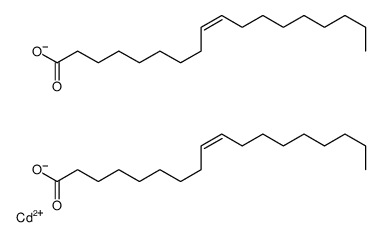 CAS#:10468-30-1
CAS#:10468-30-1 CAS#:104698-09-1
CAS#:104698-09-1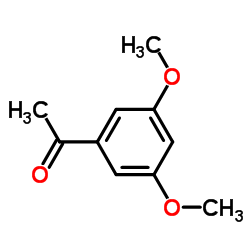 CAS#:39151-19-4
CAS#:39151-19-4 CAS#:35086-59-0
CAS#:35086-59-0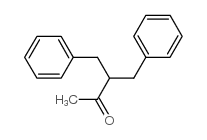 CAS#:3506-88-5
CAS#:3506-88-5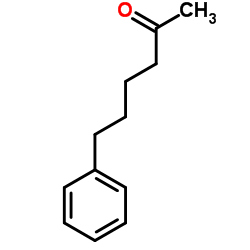 CAS#:14171-89-2
CAS#:14171-89-2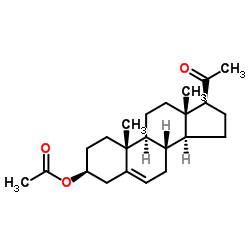 CAS#:1778-02-5
CAS#:1778-02-5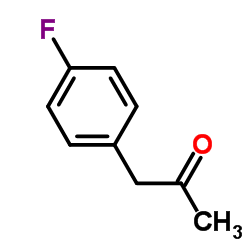 CAS#:459-03-0
CAS#:459-03-0 CAS#:928-68-7
CAS#:928-68-7